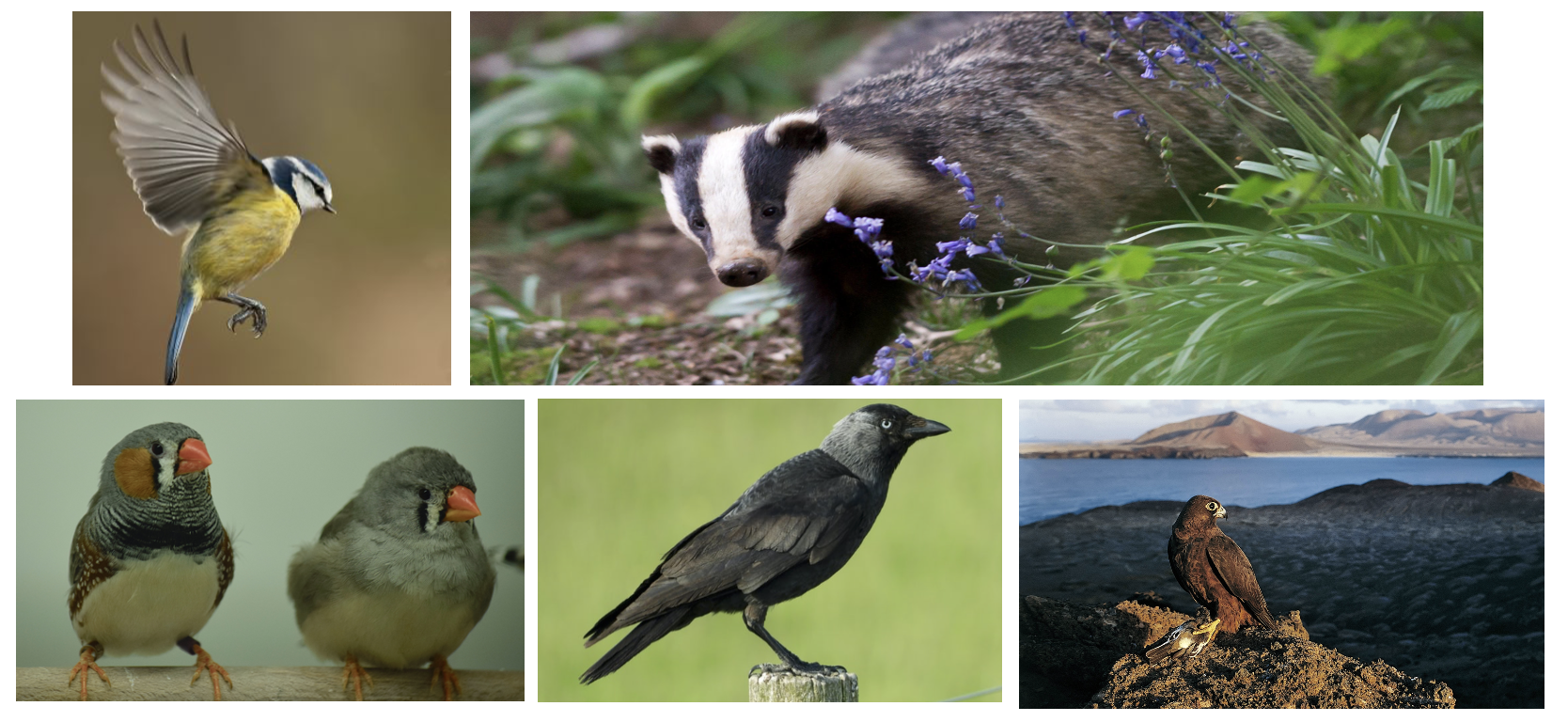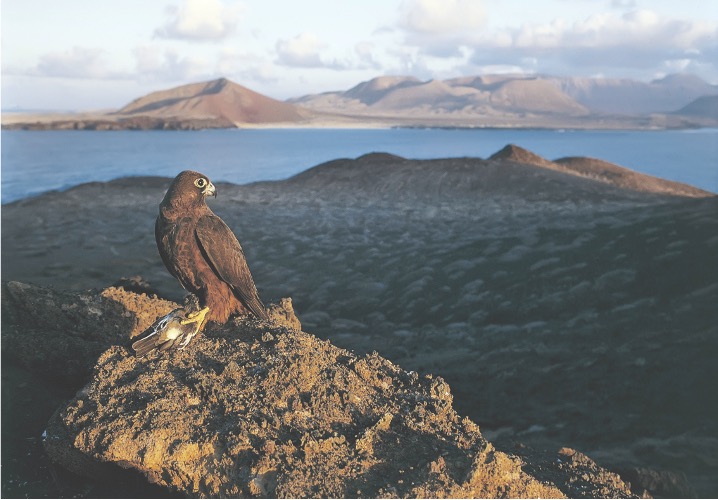Perez Badas Elisa
- Investigadora postdoctoral Talento
- Departamento: Ecología Evolutiva
- Dirección física: Oficina A-423, Calle José Gutierrez Abascal 2, Madrid 28006
- Teléfono: +34 914111328 Ext 443435
- Email: elisa.perez@mncn.csic.es
- Página web externa: https://elisapbadas.wordpress.com
- Número ORCID: 0000-0001-9398-5440
- Palabras clave:

Investigación
(English version below)
Mis investigación abarca los campos de la biología del envejecimiento, inmunología y genética. Mis proyectos actuales y pasados se centran por tanto en desentrañar las diferencias inter- e intra-individuales en los patrones de envejecimiento. Múltiples factores genéticos y ambientales pueden influenciar el proceso de senescencia (es decir, el deterioro progresivo de la función con el avance de la edad). Sin embargo, algunos individuos envejecen más rápido que otros, pero no acabamos de comprender del todo la compleja interacción entre dichos factores para dar lugar a patrones tan variados entre individuos. De hecho, el periodo temprano de vida, los efectos de la edad parental, el sexo o el estrés, actúan de forma compleja e interaccionan para determinar el inicio y la tasa de envejecimiento. Por tanto, otro de mis objetivo principales trata de explorar dichas interacciones y determinar los mecanismos subyacentes al envejecimiento, que aún están por esclarecer. Para ello, utilizo bases de datos longitudinales en poblaciones naturales (fundamentalmente en aves) que recogen datos repetidos de cientos o miles de individuos a lo largo de su vida, y aproximaciones experimentales dirigidas a aliviar los síntomas del envejecimiento fisiológico y reproductivo.
Para una información más detallada sobre mi grupo, visitar la página web.
My research interests span the fields of ageing biology, physiological ecology, immunology and genetics. My current and previous projects focus on disentangling within and between-individual differences in ageing patterns. Genetic and environmental factors can shape how individuals senesce (this is, the progressive deterioration of function with increasing age). However, some individuals senesce faster than others, and how complex factors interact to shape the observed variation in senescence patterns is still not well understood. Indeed, the early-life environment, parental age effects, sex, or stress act in complex, interacting ways to determine the onset and rate of senescence across individuals. Thus, I also aim to unravel such effects and determine the underlying mechanisms governing senescence, which are still unclear. For this, I use longitudinal databases from wild populations (mostly avian populations), which gather repeated measures from hundreds or thousands of individuals throughout their entire lifetime, and experimental approaches oriented towards an alleviation of reproductive and physiological ageing effects.
For more detailed information on the research group, visit the website.

Model species used in the research team. From left to right and top to bottom: blue tit, European badger, zebra finch, jackdaw, Eleonora's falcon.
PROYECTOS EN ACTIVO / CURRENT PROJECTS
ENVISAGE Project, 'Integrating physiology and transcriptomics to unravel environmental and social effects on ageing in the endangered European roller'
My ENVISAGE project will undertake an integrated study of reproductive and physiological ageing using multi-generational longitudinal data from stable natural populations of European roller (Coracias garrulus), classified as ‘endangered’ by the SEO Spain Red Book. To this end, (1) I will characterise the ‘ageing’ state of four populations of the species incorporating information from multiple ageing biomarkers in a meta-population approach; (2) I will experimentally activate telomere repair mechanisms in combination with increased social stress; (3) I will undertake a transcriptomics approach to explore global and specific changes in gene expression with age, and (4) I will design, for the first time in an avian species, a transcriptomic ageing clock. The controlled experimental manipulation I propose will test how environmental constraints (via anthropogenic perturbations occurring in 2 populations) and the social environment during development shape ageing-reproduction trade-offs. ENVISAGE will combine novel and state-of-the-art methodologies in an unprecedented manner in the study of ageing in wild populations. Tackling these questions is extremely timely for evolutionary biology and ecological transition models that aim to understand how individuals from endangered species and threatened populations age differently. ENVISAGE will have a clear impact on conservation strategies, for example, by targeting one population of European rollers breeding in Madrid, for which I aim to propose a nestbox supplementation plan. ENVISAGE will also train specialised personnel. In summary, ENVISAGE will determine the environmental and social factors that shape senescence patterns, and it will revolutionise the use of ageing biomarkers to characterise wild populations facing anthropogenic challenges, opening the door for the successful design of interventions in conservation policies.
* Funded by: Atracción de Talento César Nombela CAM programme

Graphical summary of the aims of the ENVISAGE project (brown boxes). Brown arrows point to populations 1 and 4, replicates under anthropogenic disturbances. The blue figure (top right corner) shows broader ENVISAGE implications for wildlife conservation. The SEO Birdlife Red Book (December 2021) status for the ER is ‘Endangered’. The European roller in Spain is scattered between the northeast, east, central and south.
PHENORESPONSE, 'Understanding phenotypic responses to environmental change: the role of genetic variation and its relationship to plasticity in coping with environmental stress'
STRESSAGE 'Early- and late-life environmental stress: ageing and consequences for individual fitness and population dynamics'
Stressful conditions, such as those associated with highly variable environments, are an important ecological and evolutionary force modulating adaptive responses in natural populations, strongly affecting vital rates of organisms and the dynamics of their populations. Climate is a particularly determinant environmental factor, as it regulates resource availability across entire trophic networks. Cimate-driven alterations in the abundance and predictability of food generate stress, with important consequences on the health and fitness of organisms. On the one hand, stressful conditions can have short-term effects on individual condition, affecting vital rates and demography. On the other hand, stress experienced early in life may impact fitness later in life through reproductive senescence and reduced longevity. However, these effects may be different among individuals, depending on their phenotype and plasticity. Therefore, understanding how animals cope with environmental stress under current climate change is a fundamental objective of biologists. The main goal of STRESSAGE is to investigate the effect of environmental stress produced by climate-driven food instability experienced both during early life (a legacy effect) and as reproductive adults. To this end, we will evaluate, for the first time in a raptor species, patterns of actuarial (i.e., increase in mortality rates with age) and reproductive senescence (i.e., decrease in reproductive success with age) and long term fitness effects in relation to environmental conditions during development, ultimately impacting population dynamics and trajectory. This will help understanding how the internal state (i.e., somatic state and its links with individual phenotypes) and environmental conditions modulate life-history strategies. To this aim, we will use a multidisciplinary approach that combines observational and already collected experimental data from a long-term field study program of a natural predator-prey system. These data will be analysed using state-of-the-art statistical techniques and modern population modelling tools. Through four interrelated Objectives, we will investigate how climate-driven environmental stress (food limitation) affects overall individual condition (telomere dynamics) and fitness (actuarial and reproductive senescence) as well as population trajectory (size and changes in trait distribution) and whether individuals adaptively respond to environmental stress and what is the role of phenotypic variation (color polymorphism and associated traits) in coping with environmental stress (eco-evolutionary response). STRESSAGE, at the interface of behavioral ecology and evolutionary biology, will follow a multidisciplinary approach, synthetizing concepts from the fields of physiology, ecology, and population dynamics. The integration of physiology, population ecology, life history theory and evolution proposed here will help understanding the likelihood of persistence of populations facing environmental stress driven by large scale environmental variation.

The Eleonora's falcon population breeding in the islet of Alegranza, Canary Islands, is the study system for the PHENORESPONSE and STRESSAGE projects.
PERSONAL DEL GRUPO / TEAM MEMBERS
Marta Correas Araus, contratada técnica de investigación, proyecto ENVISAGE / research assistant, ENVISAGE project
PERSONAL INVESTIGADOR EN COLABORACIÓN / RESEARCH COLLABORATORS
Prof Simon Verhulst, professor of the Evolutionary Biology of ageing, University of Groningen, Netherlands, website
Ellis Mulder, research assistant, University of Groningen, Netherlands
Dr Valeria Marasco, senior researcher, University of Veterinary Medicine Vienna (Vetmeduni), Vienna, Austria, website
Dr Hannah Dugdale, chair of Evolutionary Medicine, Rosalind Franklin Fellow, University of Groningen, Netherlands, website
Prof Eric Walters, professor of Biological Sciences, Old Dominion University, Virginia, United States, website
Francisco Valera, tenured scientist, Estación Experimenta de Zonas Áridas, EEZA-CSIC, Almería, Spain
Jesús Miguel Avilés, tenured scientist, Estación Experimenta de Zonas Áridas, EEZA-CSIC, Almería, Spain
Laura Gangoso, tenured scientist, Estación Biológica de Doñana, EBD-CSIC, Seville, Spain, website
Gemma Palomar, tenured scientist, Universidad Complutense de Madrid, Spain
Publicaciones relevantes
+ Acceso a todas las publicacionesOtros investigadores del departamento
- Penteriani Vincenzo
- Alonso Alvarez Carlos
- Alonso Juan Carlos
- Amo de Paz Luisa
- Aparicio Jose Miguel
- Barreda Muñoz Isabel
- Bautista Sopelana Luis M.
- Blanco Hervás Guillermo
- Broggi Obiols Juli
- Canal David
- Carrascal Luis Maria
- Contreras Velasco Adara
- Cuervo Osés José Javier
- de la Concha Maroto Alejandro
- Fargallo Vallejo Juan Antonio
- Fusté i Mach Roger
- Galván Macías Ismael
- García del Río Marina
- García Guerra Marina
- Gil Diego
- Gómez Vicioso Julene
- Jerylle ann Collado Soliven
- López Martínez María Pilar
- Martín Jose
- Melero Romero Pablo
- Merino Rodriguez Santiago
- Morales Fernaz Judith
- Moreno Klemming Juan
- Palacin Moya Carlos
- Palacios Martínez Iñigo
- Rodríguez Airam
- Romero Díaz Cristina
- Romero Haro Ana
- Sanz Cid Juan José
- Ucero Solís Alberto
- Veiga Relea José Pablo
- Wandosell Carrasco Sonia





